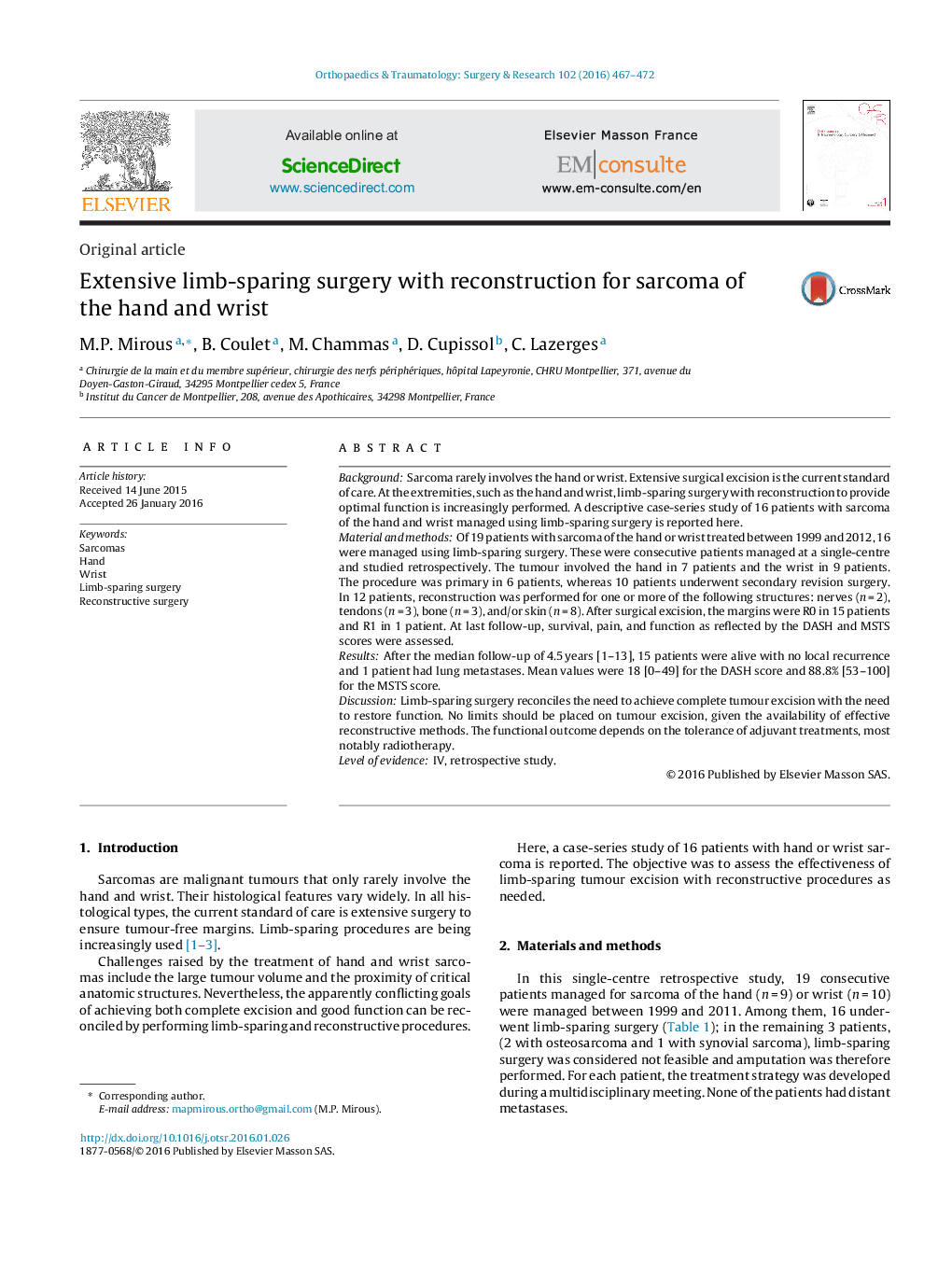| Article ID | Journal | Published Year | Pages | File Type |
|---|---|---|---|---|
| 4080854 | Orthopaedics & Traumatology: Surgery & Research | 2016 | 6 Pages |
BackgroundSarcoma rarely involves the hand or wrist. Extensive surgical excision is the current standard of care. At the extremities, such as the hand and wrist, limb-sparing surgery with reconstruction to provide optimal function is increasingly performed. A descriptive case-series study of 16 patients with sarcoma of the hand and wrist managed using limb-sparing surgery is reported here.Material and methodsOf 19 patients with sarcoma of the hand or wrist treated between 1999 and 2012, 16 were managed using limb-sparing surgery. These were consecutive patients managed at a single-centre and studied retrospectively. The tumour involved the hand in 7 patients and the wrist in 9 patients. The procedure was primary in 6 patients, whereas 10 patients underwent secondary revision surgery. In 12 patients, reconstruction was performed for one or more of the following structures: nerves (n = 2), tendons (n = 3), bone (n = 3), and/or skin (n = 8). After surgical excision, the margins were R0 in 15 patients and R1 in 1 patient. At last follow-up, survival, pain, and function as reflected by the DASH and MSTS scores were assessed.ResultsAfter the median follow-up of 4.5 years [1–13], 15 patients were alive with no local recurrence and 1 patient had lung metastases. Mean values were 18 [0–49] for the DASH score and 88.8% [53–100] for the MSTS score.DiscussionLimb-sparing surgery reconciles the need to achieve complete tumour excision with the need to restore function. No limits should be placed on tumour excision, given the availability of effective reconstructive methods. The functional outcome depends on the tolerance of adjuvant treatments, most notably radiotherapy.Level of evidenceIV, retrospective study.
